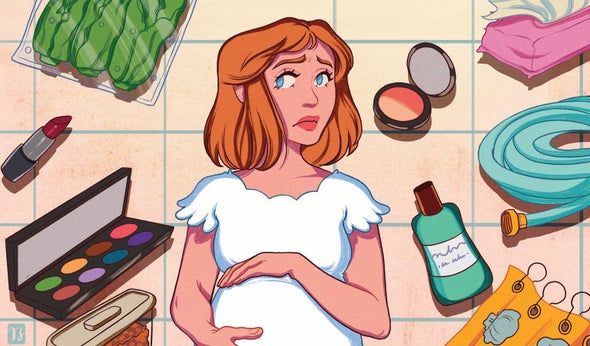Epidemiologist Carmen Messerlian does her best to avoid potentially harmful chemicals. As she glanced around her home a few days before the new year began, she took inventory of her seasonal exposure to substances called phthalates, which are widely used to make plastic more flexible and durable. They also bind fragrances to products ranging from candles to laundry detergent and cosmetics. “I'm anticandle,” she said, but she had three or four scenting her home. It was, after all, the season. Then there were the soft plastic earbuds she had picked up at an airport and the shiny enamel sparkling on her fingernails. “You break all your rules over the holidays because you want to look good and you want your house to look and smell nice.” But she certainly knows better.
At Harvard University's T. H. Chan School of Public Health, Messerlian has conducted more than a dozen studies indicating that certain phthalates impair reproductive health. Her work, and that of many others, has demonstrated that men with higher concentrations of phthalates in their urine (a measure of exposure) have lower sperm counts and poorer sperm motility than men with less of these substances. Women with high levels of exposure are more likely to have fertility problems, miscarriages, preterm labor and low-birth-weight babies. Recent research also implicates the chemicals in the growth of uterine fibroids—noncancerous tumors that can cause pain, bleeding, diminished fertility and pregnancy complications. In 2017 the U.S. government banned the use of certain phthalates in toys because they were linked to changes in male genital tract development, but regulatory agencies have been slow to limit their use in other products. As evidence of harm continues to build, many researchers see a need for greater regulation and more public awareness.
The case against phthalates is complicated because researchers cannot ethically expose people to the chemicals in order to study the effects. The evidence is therefore based on animal research and observational data among humans, including decades of studies comparing health outcomes among people with higher versus lower levels of exposure. Adding to the complexity are the large variety of phthalates, the difficulty in separating their effects from those of other environmental chemicals that similarly disrupt human hormones and reproductive tissues, and the advent of phthalate substitutes that are not necessarily safer than the originals.
There are certain windows of time when phthalate exposure is particularly concerning, research suggests. These include the preconception period when eggs and sperm mature, pregnancy and gestation, and early childhood. Last year a large study led by Kelly Ferguson of the National Institute of Environmental Health Sciences found that high exposure to each of four types of phthalates during pregnancy was associated with a 12 to 16 percent increase in the probability of giving birth three or more weeks early—which can put newborns at risk. The study, which pooled data from more than 6,000 pregnancies, was the largest ever to examine the issue, Ferguson says. It is also one of the first “to address this question in a diverse population,” she says, an important consideration because lower-income and marginalized minorities appear to have greater exposure to the chemicals. She and her colleagues estimate that cutting the study group's exposure to phthalates in half would have reduced the incidence of preterm births from 90 per 1,000 live births to 79 per 1,000.
To achieve a reduction in phthalates, “we need a multipronged approach,” says Russ Hauser, an expert on phthalates and reproductive health at Harvard. “That includes federal regulations to reduce and ban their use, increased public knowledge so people can make informed decisions, and more transparent labeling of consumer products.” The Food and Drug Administration is currently reviewing the safety of phthalates in plastics used to process and wrap food. The Environmental Protection Agency is still determining how best to evaluate the risks posed by phthalates. But the regulatory process moves at a sluggish pace.
Messerlian suggests that people can lower their exposure by making small changes in their homes and habits, such as replacing scented detergents and skin creams with fragrance-free varieties and buying cold cuts wrapped in paper at a deli counter rather than items prepackaged in plastic. Such actions also can pressure industry to make safer products. Messerlian's website, seed-program.org, offers other tips for reducing exposure. “Even if you swap out one or two things,” she says, “that's a win.”
This is an opinion and analysis article, and the views expressed by the author or authors are not necessarily those of Scientific American.


